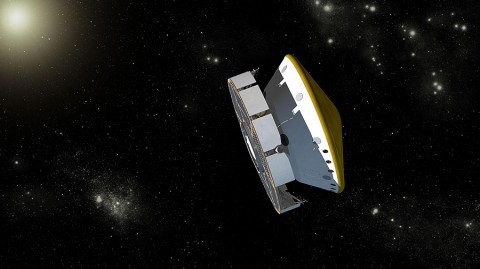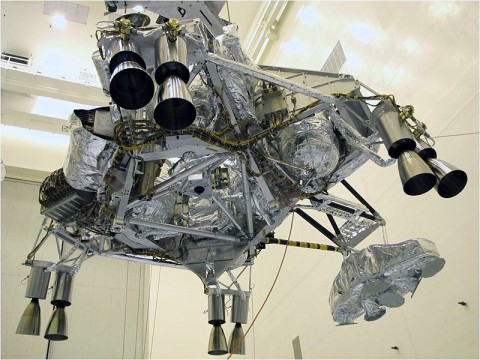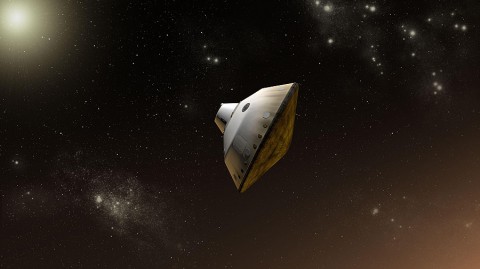Written by Guy Webster
NASA’s Jet Propulsion Laboratory
Mars Science Laboratory Mission Status Report
 Pasadena, CA – NASA’s Mars Science Laboratory spacecraft, halfway to Mars, adjusted its flight path today for delivery of the one-ton rover Curiosity to the surface of Mars in August.
Pasadena, CA – NASA’s Mars Science Laboratory spacecraft, halfway to Mars, adjusted its flight path today for delivery of the one-ton rover Curiosity to the surface of Mars in August.
Tests completed aboard Curiosity last week confirmed the health of science instruments the mission will use to learn whether an area holding an extensive record of Martian environmental history has ever offered conditions favorable for microbial life.

“It is satisfying to get the second maneuver under our belts and know we are headed in the right direction,” said JPL’s Erisa Hines, systems lead for the maneuver. “The cruise system continues to perform very well.”
“We are now on a trajectory that will put us much closer to the point we want to hit on August 5th,” added Tomas Martin-Mur, navigation team chief for the mission.

The halfway point of the trip from Earth to Mars will be April 1st, in terms of duration. The mission launched November 26th, 2011. It will land the evening of August 5th, 2012, PDT (early August 6th, EDT and Universal Time).
In the past two weeks, the rover team has checked the status of the other nine of Curiosity’s science instruments, powering them on for the first time since before launch. All the instruments passed these checkouts.
“The types of testing varied by instrument, and the series as whole takes us past the important milestone of confirming that all the instruments survived launch,” said Betina Pavri of NASA’s Jet Propulsion Laboratory, Pasadena, CA, science payload test engineer for the mission. “These checkouts provide a valuable calibration and characterization opportunity for the instruments, including camera dark images and a measurement of zero pressure in the vacuum of space for the rover weather station’s pressure sensor.”

Curiosity’s landing site is near the base of a mountain inside Gale Crater, near the Martian equator. Researchers plan to use Curiosity to study layers in the mountain that hold evidence about wet environments of early Mars.
First, the spacecraft must get there. Today’s maneuver nudged the spacecraft one-seventh as much as the flight’s first course adjustment, on January 11th. After the first maneuver, the trajectory would have put Curiosity about 3,000 miles (5,000 kilometers) and 20 minutes away from entering Mars’ atmosphere at the right place and time. Like that maneuver, today’s combined two ways of using thruster engines while the whole spacecraft spins at two rotations per minute.
“The purpose is to put us on a trajectory to the point in the Mars atmosphere where we need to be for a safe and accurate landing,” said Mau Wong, maneuver analyst at JPL.
The descent from the top of Mars’ atmosphere to the surface will employ bold techniques enabling use of a smaller target area and larger landed payload than were possible for any previous Mars mission. These innovations, if successful, will place a well-equipped mobile laboratory into a locale especially well suited for its mission of learning. The same innovations advance NASA toward capabilities needed for human missions to Mars.
As of March 29th, the spacecraft will have traveled about 196 million miles (316 million kilometers) of its 352-million-mile (567-million-kilometer) flight to Mars.
JPL, a division of the California Institute of Technology in Pasadena, manages the mission for the NASA Science Mission Directorate, Washington. More information about Curiosity is online at http://www.nasa.gov/msl and http://mars.jpl.nasa.gov/msl/ .
You can follow the mission on Facebook at: http://www.facebook.com/marscuriosity and on Twitter at: http://www.twitter.com/marscuriosity .


